Tokyo Cherry Blossoms 2026: Best Spots, Timing, Festivals

Discover the 20 best places to see cherry blossoms in Tokyo for 2026. Get the latest forecast, explore popular locations like Ueno and Meguro River, find hidden gem spots to avoid crowds, and experience magical evening light-ups and sakura festivals.
Cherry Blossoms in Tokyo: Blooming Season in 2026
Tokyo is home to many parks and gardens where you can enjoy cherry blossom viewing in spring. Famous locations include Ueno Park, Chidorigafuchi Park near the Imperial Palace, Rikugien Garden, and others.
According to the first cherry blossom forecast for 2026 released by the Japan Meteorological Corporation, Tokyo's cherry blossoms are expected to start blooming around March 19 and reach full bloom around March 26. (Source: JMC)
Each park and garden in Tokyo hosts its own cherry blossom festival. Most locations host cherry blossom light-ups in the evening, allowing visitors to enjoy the surreal beauty of the blossoms at night.
Tokyo's Cherry Blossom Parks and Festivals
1. Chidorigafuchi Park near the Imperial Palace
2. Meguro River
3. Ueno Park
4. Sumida Park near Asakusa and Tokyo Skytree
5. Yoyogi Park
6. Edogawa Park and Kanda River
7. Tokyo Midtown
8. Aoyama Cemetery
9. East Gardens of the Imperial Palace
10. Koishikawa Korakuen Garden
11. Hamarikyu Gardens
12. Shiba Park
13. Hibiya Park
14. Rikugien Garden
15. Inokashira Park
16. Koganei Park
17. Asukayama Park
18. Showa Memorial Park
19. Mt. Takao
20. Ryushuin Temple
Other Tips
Weather and What to Wear during Cherry Blossom Season
Manners during Cherry Blossom Viewing Parties
Early and Late Cherry Blossom Varieties
1. Chidorigafuchi Park near the Imperial Palace

Photo by Pixta
Chidorigafuchi, a road that runs along the west side of the Imperial Palace, is home to an assortment of cherry trees that truly speak to the Japanese spirit, with the trees accented by the freshly sprung greenery and the palace’s moat.
Though there are several skyscrapers located in the distance, these shouldn’t detract from the cherry blossom viewing experience. The area is beautifully lit up at night.
The Chidorigafuchi Cherry Blossom Festival is usually held from mid-March to late April, with cherry blossom light-ups in late March.

Photo by Pixta
The nearby Yasukuni Shrine is renowned for hosting the specific Somei Yoshino tree used by the Japan Meteorological Agency to officially declare the start of Tokyo’s cherry blossom season.
Designated as the city's 'specimen tree' in 1966, it is surrounded by approximately 600 other Somei Yoshino trees, making the shrine a premier destination for blossom viewing.
Hotels near Chiyoda Ward Chidorigafuchi Park
2. Meguro River

Photo by Pixta
Meguro River is flanked by around 800 cherry trees on both sides, stretching for about 3.8 km. At night, lanterns are lit, making for a dreamlike cherry blossom experience.
There are several cherry blossom festivals held in the districts along the Meguro River, but the most famous one is the Nakameguro Cherry Blossom Festival, which will be held during the last weekend in March.
The best way to enjoy the cherry blossoms here is by taking a stroll along the river and trying some of the treats offered by the many food stalls set up for the event.
The closest stations for Meguro River are JR Meguro Station or Nakameguro Station on the Tokyu Toyoko Line.
Hotels near Meguro River Cherry Blossom Trees
3. Ueno Park

Photo by Pixta
No article on cherry blossom viewing spots in Tokyo would be complete without Ueno Park. In spring, the park is visited by thousands of families, company workers, and students, all looking to take in the beautiful pink blossoms.
Since the park can get crowded during this time of year, we recommend meeting up with your party at Ueno Station rather than in the park itself.
Ueno Sakura Festa, the park's cherry blossom festival, is usually held from mid-March to early April and has many highlights, including food stalls and live shows. You can enjoy the festival every day from 10:00 to 21:00 (*on the last day, it ends at 20:00).
Read also
Hotels near Tokyo Metropolitan Ueno Onshi Park
↑ Return to the top of article.
4. Sumida Park
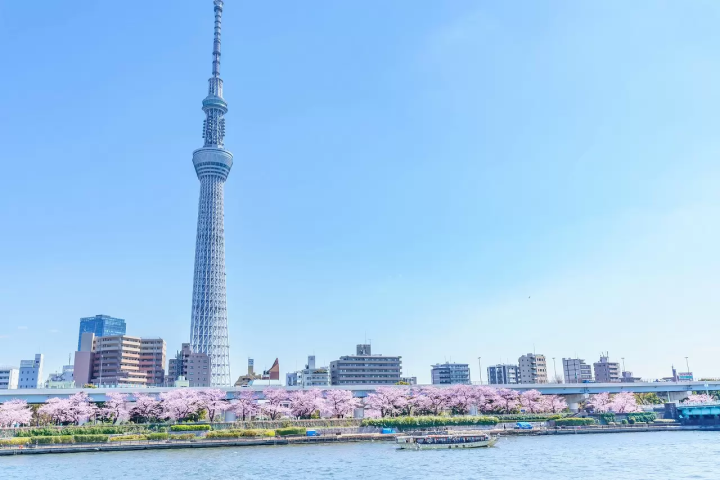
Photo by Pixta
Sumida Park, located just a short walk from Asakusa Station along the Sumida River, is famous for its beautiful cherry blossom viewing.
While walking along the river and enjoying the stunning cherry trees as their blossoms fall into the water is a wonderful experience, we also recommend chartering a pleasure boat for a unique view of the trees from the river.
Additionally, the nearby Tokyo Skytree offers a striking contrast between the old and the new in the cityscape.
The cherry blossom festival at Sumida Park is usually held from mid-March to early April. Visit in the evenings to enjoy the beautiful light-ups!
Hotels near Sumida Park
5. Yoyogi Park

Photo by Pixta
Every year, thousands of visitors flock to Yoyogi Park to enjoy the cherry blossoms. The park is home to around 500 cherry trees, primarily of the Somei Yoshino variety.
Visitors can purchase snacks like yakisoba from stalls and catering carts set up throughout the park, or many choose to bring their own food and drinks to enjoy in the shade of the trees.
During cherry blossom season, lines for public restrooms can be quite long. To avoid waiting, consider locating a nearby restroom ahead of time or limiting your consumption of beverages.
The closest stations for Yoyogi Park are JR Harajuku Station, Yoyogi Koen Station on the Chiyoda Metro Line, and the Meiji Jingumae (Harajuku) Station on the Chiyoda Metro and Fukutoshin Lines.
Hotels near Yoyogi Park
↑ Return to the top of article.
6. Edogawa Park and the Garden of Hotel Chinzanso Tokyo

The alley along Kanda River from Edogawabashi Station to Komazuka Bridge is one of the prime cherry blossom spots in Tokyo. This area is part of Edogawa Park.
Visit from late March to mid-April to enjoy the cherry blossoms lit up in the evenings. The most attractive feature of this place is that the branches are close to the ground, making it possible to see the blooms up close.
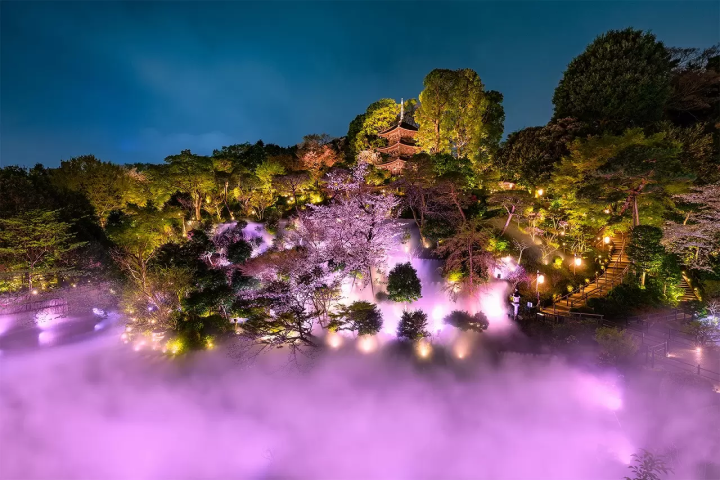
Picture courtesy of PR Times
The beautiful garden of Hotel Chinzanso Tokyo is close by, offering stunning views of historical monuments surrounded by cherry blossoms. Over twenty varieties of sakura can be found in this garden, which makes it possible to enjoy the cherry blossoms here for around two months!
A sea of clouds is released several times a day in the garden, and between February 6 and April 12, the sea of clouds has a special cherry blossom theme. After dark, the garden is beautifully illuminated at night with a thousand lights.
If you wish to have an extraordinary experience of the cherry blossom season, do visit Hotel Chinzanso Tokyo this spring. (*Please note that this garden can be accessed only by visitors who use the restaurants and other facilities within the hotel.)
Hotels near Hotel Chinzanso Tokyo
7. Tokyo Midtown

Photo by Pixta
Tokyo Midtown, a commercial complex near Roppongi, features about 103 cherry blossom trees, primarily of the Somei Yoshino variety. Visitors can also enjoy an additional 44 cherry blossom trees in the adjacent Hinokicho Park.
From mid-March to mid-April, the facility hosts MIDTOWN BLOSSOM, an event that celebrates cherry blossoms.
At night, the cherry blossom trees are beautifully illuminated, creating a dreamlike spring atmosphere right in the heart of the city.
Hotels near Tokyo Midtown
8. Aoyama Cemetery

Photo by Pixta
Aoyama Cemetery, located in Tokyo’s Minato Ward, is a lovely place to stroll and enjoy the beautiful cherry blossoms.
However, unlike other hanami spots, visitors are not allowed to spread out tarps or consume alcohol in the cemetery. Additionally, the cemetery closes at night, so be sure to visit during the day.
9. East Gardens of the Imperial Palace

Photo by Pixta
Located near Tokyo Station, the East Gardens of the Imperial Palace (Kokyo Higashi Gyoen) are home to 200 cherry trees of different varieties that bloom in order, from early March to mid-April.
With historical sites and a free museum featuring valuable works of art, this site is an excellent destination for visitors interested in Japanese history and culture, especially after enjoying a walk among the blooming cherry blossoms.
Hotels near Imperial Palace East Gardens
10. Koishikawa Korakuen Garden

Photo by Pixta
Built at the beginning of the Edo period (1603-1868), Koishikawa Korakuen Garden is one of Tokyo's two large Japanese gardens, alongside Rikugien Garden. Visitors are not permitted to spread out tarps or have picnics, so enjoying the cherry blossoms here is limited to walking tours.
After viewing the blossoms, be sure to check out Tokyo Dome, located right next door. This major stadium and performance venue hosts regular events, and there are numerous nearby restaurants, shopping options, and a small amusement park.
The closest station to the garden is Iidabashi Station on the Oedo Line.
Hotels near Koishikawa Korakuen
11. Hamarikyu Gardens

Photo by Pixta
Also established during the Edo period, the Hamarikyu Gardens have been designated as a special historic and aesthetic landmark.
If you are in the Shimbashi or Ginza area and want to enjoy cherry blossoms, we recommend visiting Hamarikyu Gardens. This expansive garden features around 100 cherry trees, offering a peaceful escape from the hustle and bustle of the city.
Hotels near Hamarikyu Gardens
↑ Return to the top of article.
12. Shiba Park
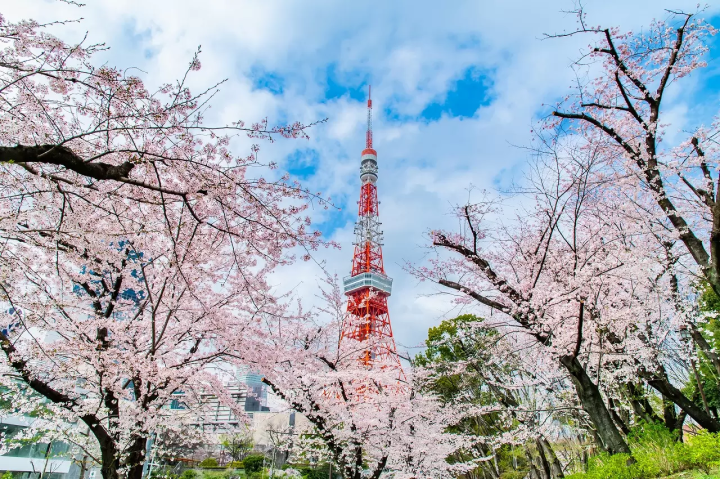
Photo by Pixta
Shiba Park, located at the foot of Tokyo Tower, has around 200 cherry trees and is a great place to enjoy the blooms with the bright orange symbol of Tokyo jutting up in the background.
Areas around the Maruyama Fountain and Benten Pond, located within the park, are especially popular sites for cherry blossom viewing and hanami picnics.
13. Hibiya Park

Photo by Pixta
Hibiya Park is a spot in central Tokyo surrounded by skyscrapers, where you can enjoy beautiful cherry blossoms. Around 40 cherry trees are planted and bloom here during the sakura season.
The park is known as the first contemporary park to be established in Japan and is over 100 years old. You will notice a large fountain in the middle of the pond, which is rare in Japanese parks. Typically frequented by office employees taking breaks from work, a visit here will also give you a glimpse of daily life in Tokyo.
14. Rikugien Garden

Photo by Pixta
Rikugien Garden is one of the big two Japanese-style gardens that can be enjoyed in Tokyo (the other is Koishikawa Korakuen). The gardens are beautiful year-round, but especially striking in the springtime when the drooping cherry trees come into bloom.
With the garden bathed in pink throughout the day, once the sun sets, the cherry blossoms are lit up, bringing about a whole new beauty to the blossoming buds.
Hotels near Rikugien Garden
15. Inokashira Park

Photo by Pixta
Just a short stroll from Kichijoji Station, Inokashira Park offers a breathtaking spring experience. Visitors can admire the blossoms from the winding paths or rent a paddle boat to see them from the water.

Photo by Pixta
The sight of 500 cherry trees in full bloom is truly spectacular, drawing families and couples from across Tokyo. The park’s central pond is a highlight, perfectly reflecting the 'ocean of pink' that surrounds it.
Hotels near Inokashira Park
16. Koganei Park

Photo by Pixta
Koganei Park is home to the largest number of cherry trees in the city, coming in at around 1,700 with over 50 different varieties.
At the festival held on the first Saturday and Sunday in April, visitors can enjoy events featuring traditional performing arts, Japanese dancing, ikebana, and tea houses.
17. Asukayama Park

Photo by Pixta
Asukayama Park boasts around 300 years of history as a favorite sakura viewing spot for locals in Tokyo's Kita ward. Approximately 650 cherry trees bloom in spring at this expansive park. It is an ideal place to enjoy a day full of flowers and hanami picnics.
Parkgoers can enjoy viewing antique steam engine trains that were used in Tokyo, too, making it a great spot for families and those traveling with children.
Hotels near Asukayama Park
18. Showa Memorial Park

Photo by Pixta
Located in Tachikawa, the Showa Memorial Park is home to about 1,500 cherry trees. The Sakura no Sono area of the park features several varieties of cherry trees and is especially beautiful!
Bring your tarp, some food and drinks, and enjoy a relaxing afternoon under the blossoms.
Read also
Hotels near Showa Kinen Park
19. Mt. Takao

Photo by Pixta
The rustic Mt. Takao is another famous spot for cherry blossoms in spring. This Tokyo peak is the ideal option for those looking to enjoy a more rural scene while still being close to the city.
Cherry trees line the hiking paths, and there are mountain temple buildings scattered around the mountainside. From the top, you can get a view of more sakura and, on a clear day, Mt. Fuji. For those who want to go straight to the top, there is a cable car and ropeway that will bring you to the peak.
Please note that Mt. Takao is a popular destination on the weekends. If you visit during the cherry blossom season, try to go on a weekday to avoid crowds.
20. Ryushuin Temple

Photo by Pixta
Nestled within the scenic mountains of Akiruno in western Tokyo are Otsu Hana-no Sato Flower Garden and Ryushuin Temple, offering picturesque views of Somei Yoshino and weeping cherry trees mingling with vibrant fields of yellow blooms, rhododendrons, and Mitsuba azaleas.
Adjacent to the garden is the serene Ryushuin Temple, a Buddhist sanctuary that houses a charming tea shop, providing a tranquil haven to unwind amidst the blooming beauties.
A 50-minute trip from Shinjuku, Akiruno boasts nature, hot springs, art, and cuisine. The garden is located near Furusato Kobo Itsukaichi Workshop, perfect for art lovers interested in crafting Japanese paper.
Weather and What to Wear during Cherry Blossom Season
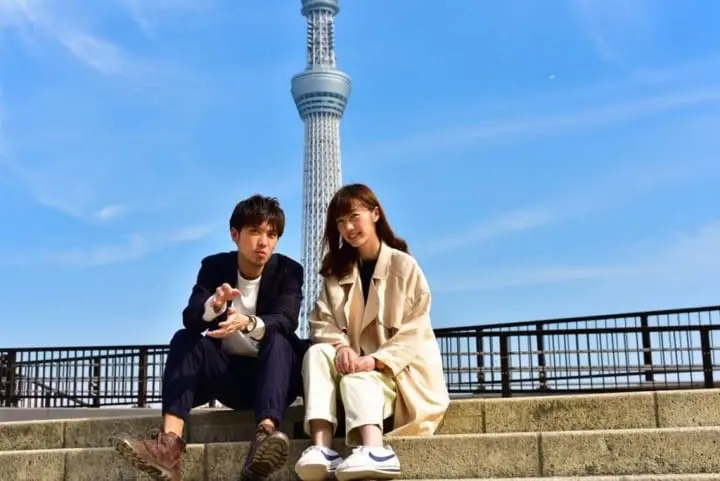
From the end of March to the beginning of April, it gets to be around 10℃ in Tokyo, a little chilly to say the least.
While you don’t need a thick winter coat, you’ll definitely need a jacket. Still, once the sun goes down the temperature drops considerably, so be sure to pack accordingly if you plan to be out late.
Read also
Manners during Cherry Blossom Viewing Parties

A lot of people come out to view the cherry blossoms every year, so it’s important to mind your manners when picking out a spot for your picnic and when throwing away your garbage so that everyone can enjoy their time outside together!
Manners When Picking Out a Spot

Photo by Pixta
The typical way that people set their spot for hanami is to lay out a tarp. However, one thing to keep in mind when doing this is don’t take any more space than you’ll need. If you end up taking too much space, then other people won’t be able to enjoy the flowers!
Also, somebody needs to stay behind after you set down your tarp. If not, security guards may come by and throw away your stuff, so make sure to leave someone behind to hold your spot.
Also, even if you get your spot, the wind can easily blow your tarp away, so use some nearby stones to keep the tarp from being blown away. Please don’t stick pegs into the ground or into tree roots!
Though this differs by location and day, some people may get there first thing in the morning or even the night before to claim their spot for their picnic. Though this may be difficult for guests visiting from out of town, it’s usually a good idea to try and get your spot as early as possible.
Sorting Trash and Throwing It Away

Photo by Pixta
Areas of the city with cherry trees are usually located in parks or along rivers, meaning that the majority of them are located in public spaces. Still, local municipalities are typically conscious of hanami season and set up places for people to throw away their trash, so don’t be a litterbug!
Just like with convenience stores and regular trash pickups, these trash boxes will be separated into different types of garbage for recycling, so make sure to abide by the signs and put trash in its proper place. The picture here shows the trash can area at Ueno Park during the Sakura Matsuri (Cherry Blossom Festival).
Typically, trash is separated into the following categories: combustible, non-combustible, glass bottles, and metal cans.
Early and Late Cherry Blossom Types

Photo by Pixta
Depending on the type of sakura tree, you may be able to see cherry blossoms that bloom earlier or later than the beginning of April.
For example, Kawazu-zakura is a type of cherry blossom that can be viewed as early as February until around mid-March. This type of cherry blossom is native to Kawazu, an area in Shizuoka prefecture.
On the other hand, if you visit Japan around the beginning of April, you may be able to catch the Yae-zakura, a layered type of cherry blossom that blooms a week or two after the regular sakura.
Read also
Tips for Enjoying a Spring Trip in Tokyo

Photo by Pixta
In Japan, the cherry blossom season is a great occasion for people to gather and have fun eating and drinking at a picnic under the cherry trees. If you visit Japan at this time of the year, join the party!
Please keep in mind the manners mentioned above, look for a great place to see the cherry blossoms and enjoy your time.
FAQ
How long is the cherry blossom season in Japan?
The cherry blossom season typically spans from late March to early May, varying slightly depending on the specific location within Japan and the weather conditions of a given year. This period encompasses the blooming, full bloom, and falling of the cherry blossoms, which generally lasts for about one to two weeks in each location. Keep in mind that the exact timing of cherry blossom season can fluctuate annually due to factors such as weather, making it essential to stay updated on bloom forecasts when planning a visit.
What park in Tokyo is best to see cherry blossoms?
Tokyo offers several stunning locations to view cherry blossoms, but one of the most popular is Ueno Park. During cherry blossom season, Ueno Park becomes a prime hanami (cherry blossom viewing) spot, featuring over a thousand cherry trees that burst into beautiful pink and white blooms. The park's large open spaces, pathways, and central lotus pond make for a picturesque setting to enjoy hanami picnics and strolls beneath the blossoms.
If you're seeking a less crowded location, we recommend Asukayama Park, Sumida Park, or Koganei Park, where you can enjoy the blossoms leisurely.
How long do cherry blossoms last in Tokyo?
In Tokyo, the cherry blossom season typically lasts for about one to two weeks. The duration can vary depending on factors such as weather, the specific variety of cherry trees, and other natural conditions. Once the cherry blossoms reach full bloom, the iconic pink and white blooms generally remain at their peak for about three to seven days, after which the petals slowly begin to fall, signaling the end of the cherry blossom season.
What is the cherry blossom capital of Japan?
The city of Kyoto is often considered the historic and cultural heart of Japan and is regarded as one of the foremost locations for experiencing the beauty of cherry blossoms. Renowned for its stunning cherry blossom displays in spring, particularly around famous sites such as Maruyama Park, Kiyomizudera Temple, and the Philosopher's Path, Kyoto is often referred to as the "cherry blossom capital of Japan." The city's rich cultural heritage and its numerous iconic cherry blossom spots make it a must-visit destination during the sakura season.
What do you wear to see cherry blossoms?
When viewing the cherry blossoms in Japan, it's best to wear comfortable clothing suitable for spending time outdoors. Light and casual attire, including shirts, blouses, and comfortable pants or skirts, in addition to walking shoes, is ideal. Layering is also advisable as temperatures can vary throughout the day. Carrying a light jacket or sweater is recommended for cooler mornings or evenings.
What is the app for cherry blossom forecast?
One popular app for cherry blossom forecasts in Japan is the "Sakura Navi" app, which provides up-to-date information about cherry blossom blooming times and conditions across the country. This app is widely used by locals and visitors alike to plan hanami (flower viewing) outings and trips during the cherry blossom season. Additionally, various websites and travel apps often provide sakura forecasts and updates to help people track the progression of cherry blossoms blooming in different regions of Japan.
Read also
Main image by Pixta
This is the official account of MATCHA's editorial department. Our articles feature useful travel information for visitors to Japan, from how-to guides to recommended places to visit.




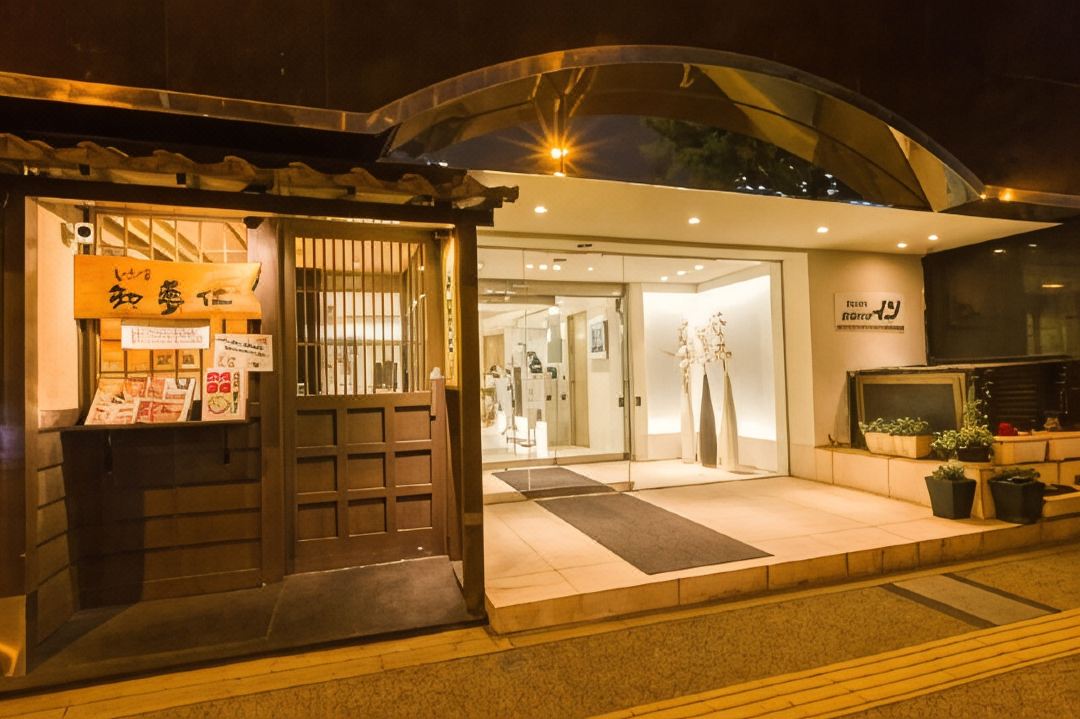







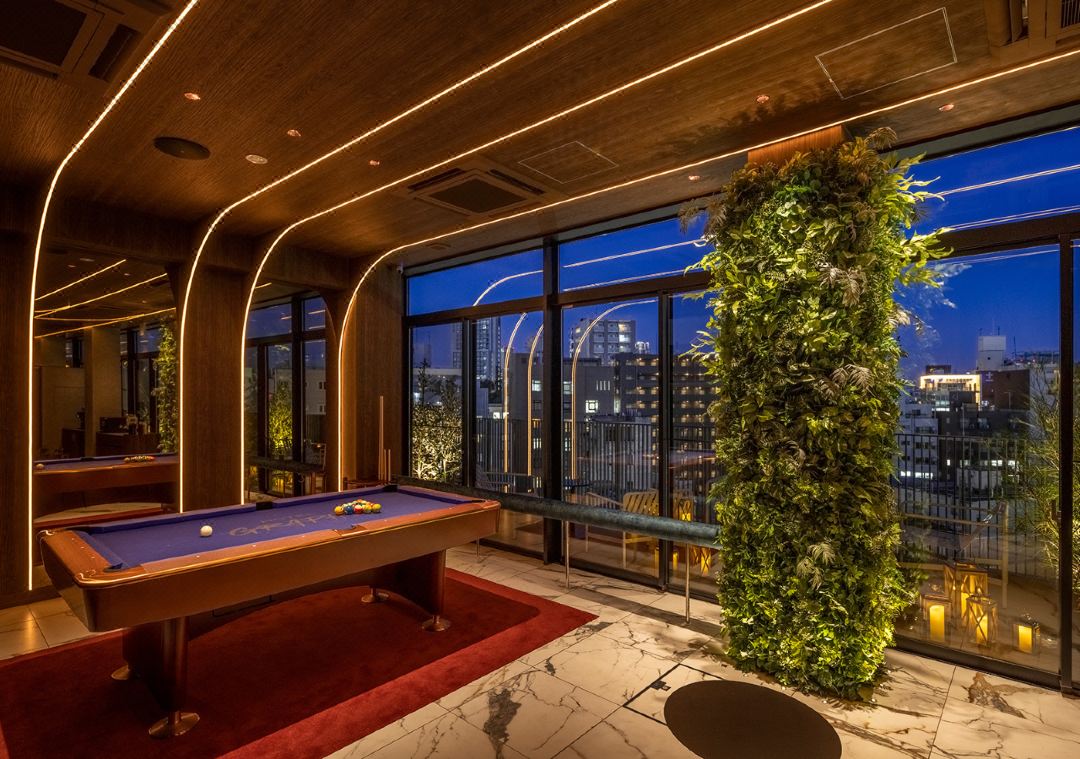























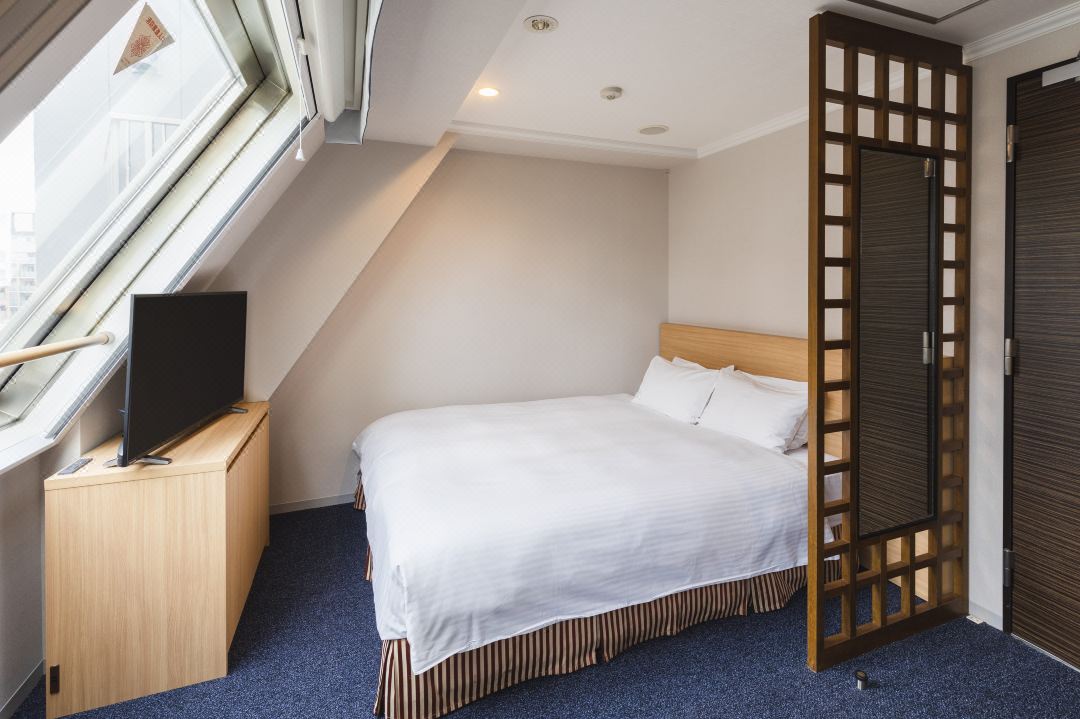





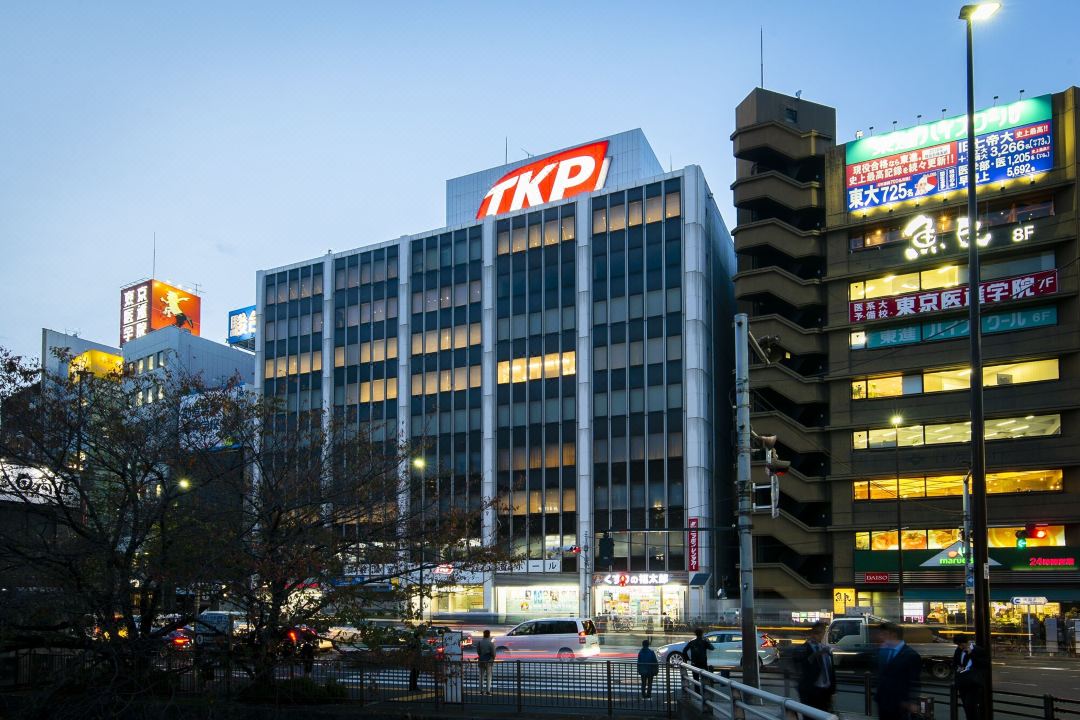





















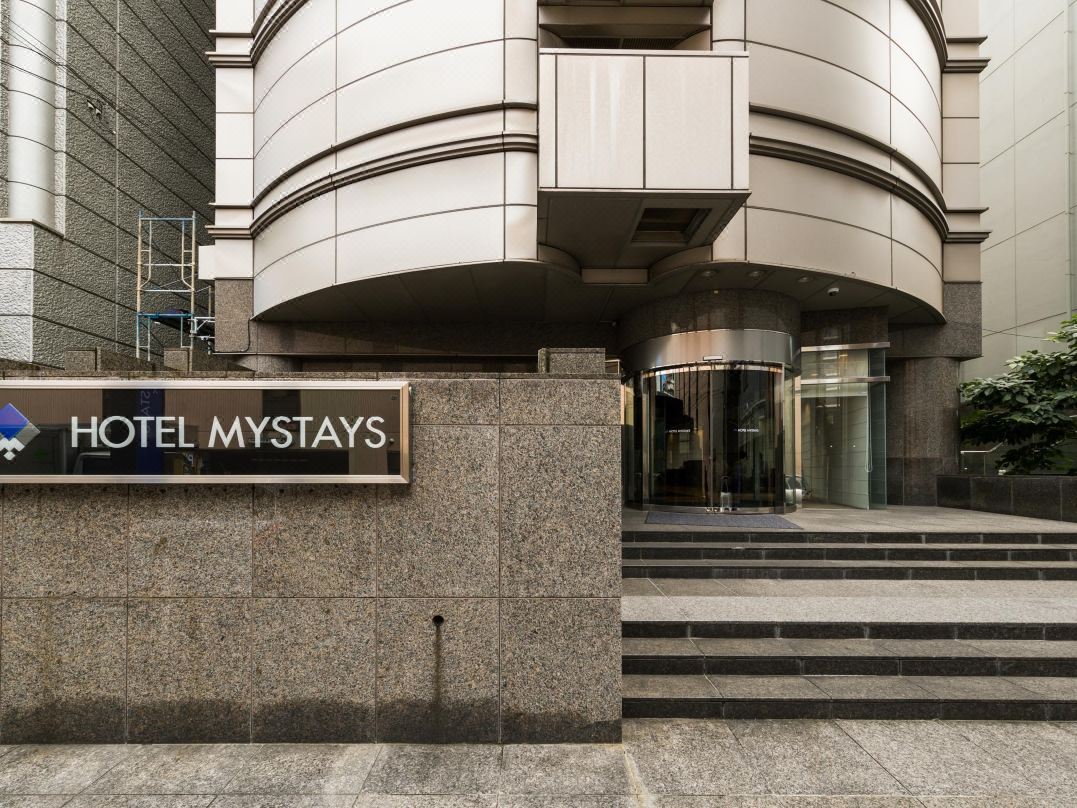











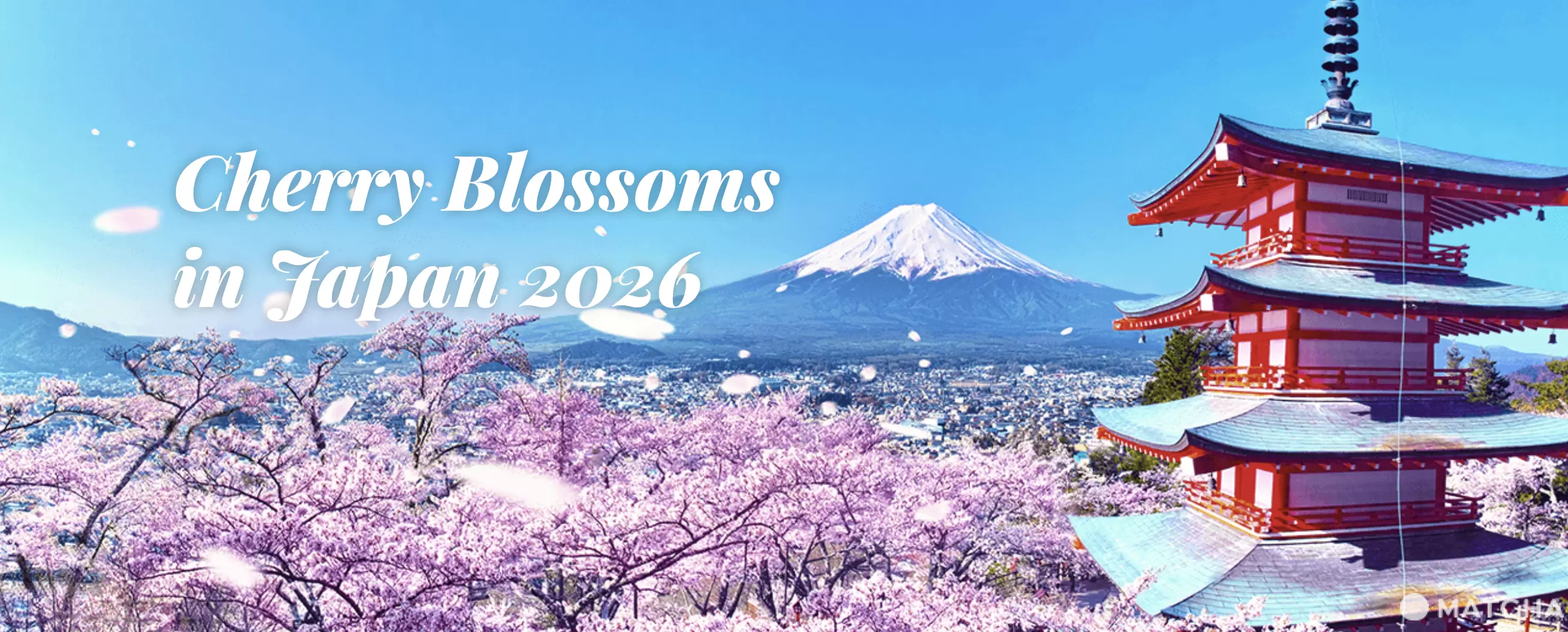





































![[Coupon Available] Attention Overseas Winter Sports Fans! Nagano's Sports Depot Has Evolved](https://resources.matcha-jp.com/resize/720x2000/2026/01/05-254819.webp)
![[2 hours from Tokyo ] 10 Quiet and Breathtaking Views of Mount Fuji in Yamanashi Hokuto City , Yamanashi - Part 2](https://resources.matcha-jp.com/resize/720x2000/2025/12/16-253037.webp)

![[Reopening in March 2026] Ikoma Sanjo Amusement Park Park, 45 minutes from Osaka , with free admission](https://resources.matcha-jp.com/resize/720x2000/2024/08/28-194409.webp)